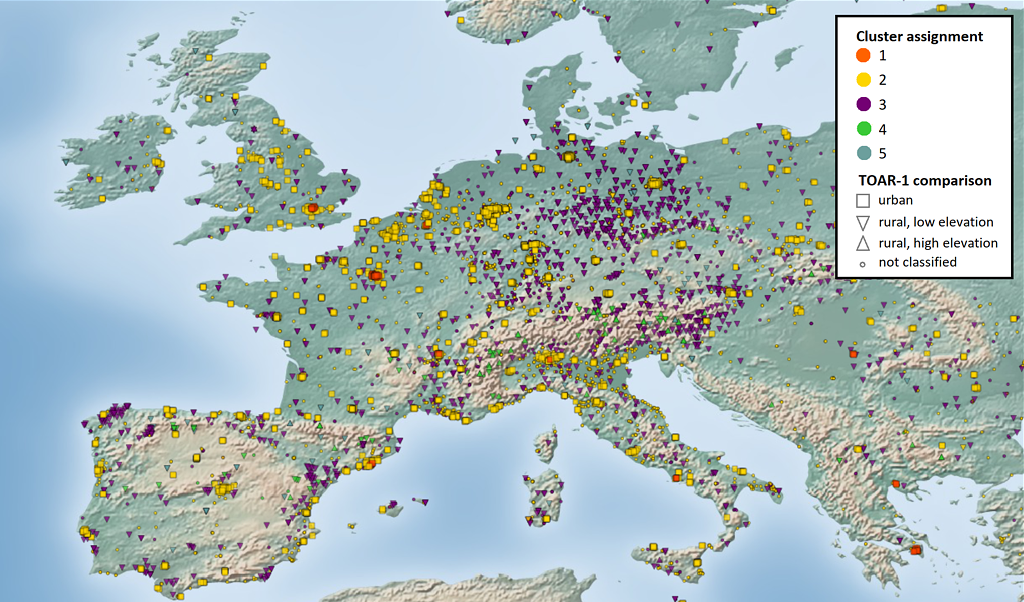The tropospheric ozone assessment report vegetation (Mills et al, 2018) provided the first assessment of worldwide concentration based ozone metrics relevant for vegetation. The authors caution though that for a detailed description of plant damage and the related crop loss, flux-based metrics must be available. The implementation of flux-based ozone metrics requires – unlike the already existing concentration based metrics –meteorological input data and embedded modelling.
Flux-based ozone metrics are necessary for an accurate quantification of ozone damage on vegetation, because plant pores open and close depending on environmental conditions and growing season, and thus take in more or less ozone (Figure 4, Figure 5).

Figure 5: Cross section of leaf pore (‘stomata‘) and ozone intake.
Picture adapted from ICP brochure “Flux-based critical levels of ozone pollution for vegetation“
Figure 6: Visible damage on French bean leaves.
Picture adapted from: ICP brochure “Have you seen these ozone injury symptoms?“
In contrast to the already available concentration based metrics of ozone, they require the input of meteorological and soil data, as well as a consistent parametrization of vegetation growing seasons and the inclusion of a stomatal flux model. Embedding this model with the TOAR database will make a global assessment of stomatal ozone fluxes possible for the first time ever. This requires new query patterns, which need to merge several variables onto a consistent time axis, as well as more elaborate calculations, which are presently coded in FORTRAN.
For the stomatal flux implementation in the TOAR database service infrastructure, we collaborate with plant ecophysiologists (e.g. Lisa Emberson from SEI York, UK).
Reference: Mills, G. et al. Tropospheric Ozone Assessment Report: Present-day tropospheric ozone distribution and trends relevant to vegetation. Elem Sci Anth 6, 47 (2018).


